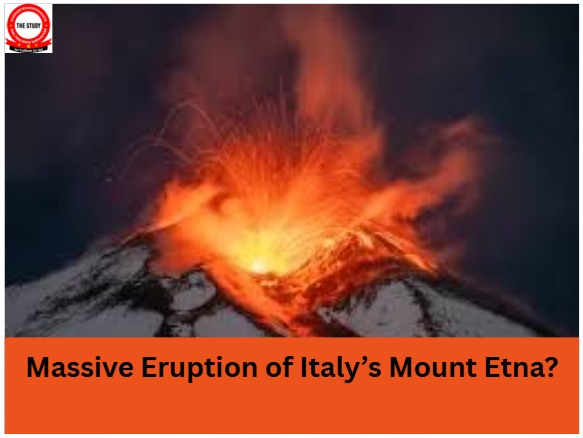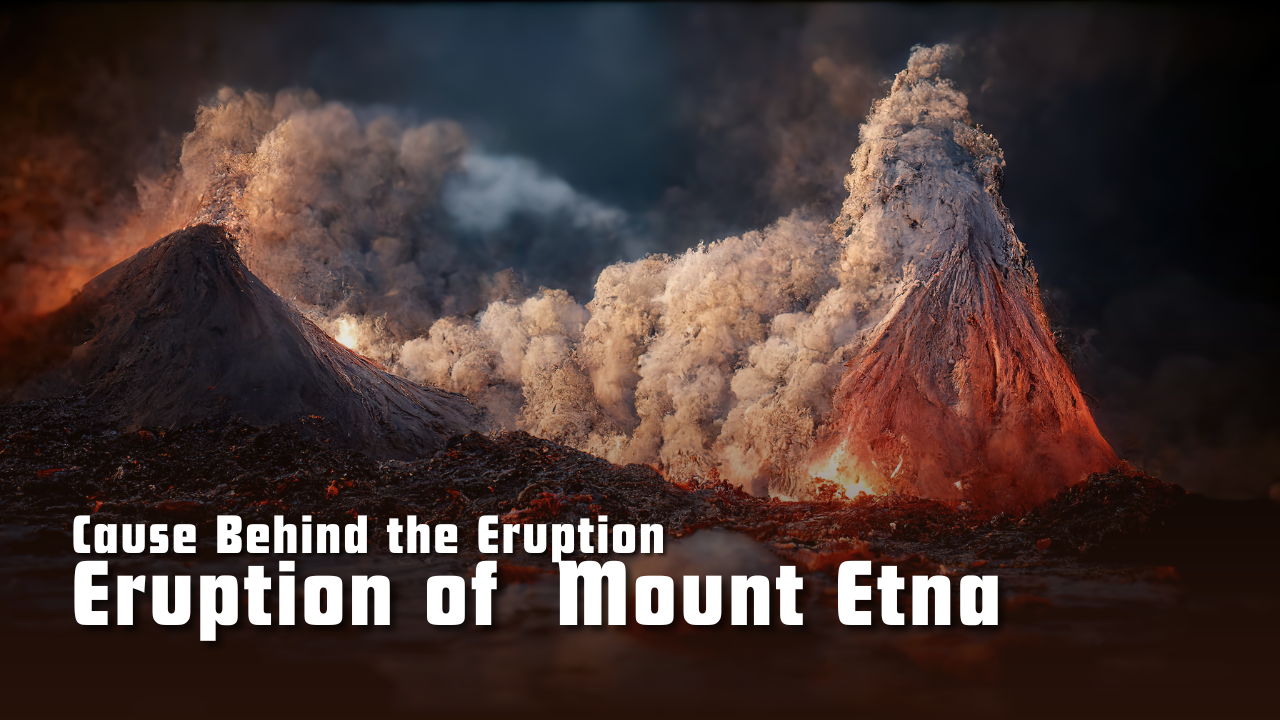Eruption of Mount Etna
What Caused the Massive Eruption of Italy’s Mount Etna?

Context: Italy’s Mount Etna, Europe’s largest and most active volcano, recently erupted in a dramatic display of volcanic power. The eruption sent towering plumes of ash, smoke, and rock fragments several kilometres into the sky, creating a breathtaking sight.
About Mount Etna
- Mount Etna is situated on the east coast of Sicily, the largest island in the Mediterranean Sea, just off the “toe” of Italy’s boot-shaped mainland.
- As the highest peak in Italy south of the Alps, Mount Etna is a dominant feature of the Sicilian landscape and one of the most closely monitored volcanoes in the world.
- Its summit is home to five craters, which frequently erupt. In addition, over 300 vents scattered along the mountain’s slopes can produce what are known as flank eruptions.
- These eruptions are quite common; since the year 1600, there have been over 60 flank eruptions and numerous summit explosions.
- Etna has erupted multiple times in the past two decades alone, with major activity recorded in 2001, 2002–03, 2012, 2018, and most recently, 2021.
- Designated a UNESCO World Heritage Site in 2013, Mount Etna has a documented eruptive history spanning at least 2,700 years, with geological records indicating volcanic activity dating back over 500,000 years.
What Triggered the Latest Mount Etna Eruption?
- According to experts at Italy’s National Institute of Geophysics and Volcanology (INGV), the eruption likely started due to increased internal pressure from expanding volcanic gases.
- This pressure is believed to have caused the collapse of Etna’s southeast crater, which in turn led to lava flows and the dramatic release of volcanic material into the sky.
Strombolian or Plinian: What Kind of Eruption Was It?
- Initial observations suggested that Mount Etna experienced a Strombolian eruption, named after Italy’s Stromboli volcano.
- This eruption type is known for moderate, explosive bursts that eject lava fragments, cinders, and rocks.
- These eruptions occur when gas bubbles trapped in magma reach the surface and burst violently—much like gas escaping from a shaken soda bottle.
- However, some volcanologists argue that the scale and height of the ash cloud—extending several kilometres high—indicate a Plinian eruption.
- Plinian eruptions are far more explosive, sending ash, gas, and rock into the stratosphere and often covering large areas with debris.
- Such eruptions are named after Pliny the Younger, who documented the catastrophic eruption of Mount Vesuvius in 79 AD.
The recent eruption of Mount Etna serves as a powerful reminder of the volcanic activity that continues to shape Earth’s geology. Whether Strombolian or Plinian, the event showcased the dynamic nature of the volcano, which remains under close scientific observation.
Subscribe to our Youtube Channel for more Valuable Content – TheStudyias
Download the App to Subscribe to our Courses – Thestudyias
The Source’s Authority and Ownership of the Article is Claimed By THE STUDY IAS BY MANIKANT SINGH



